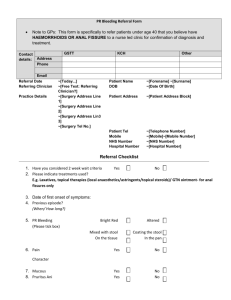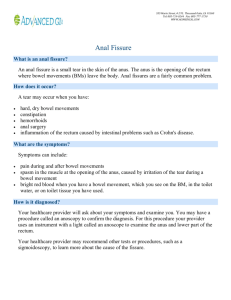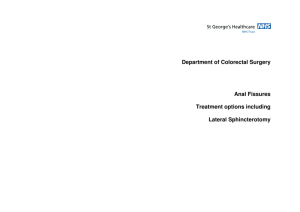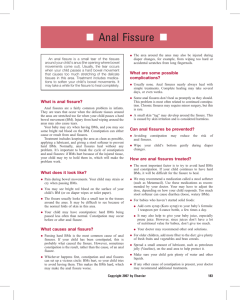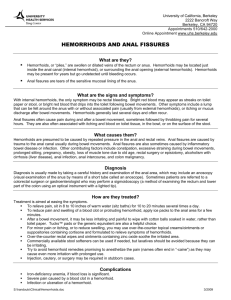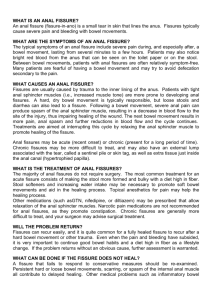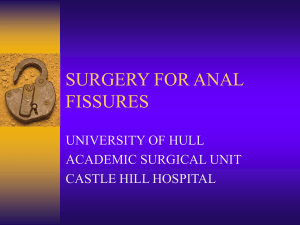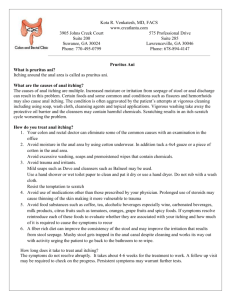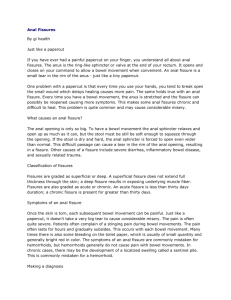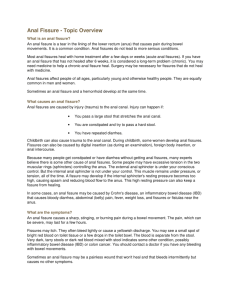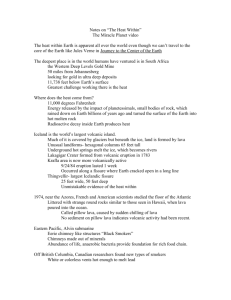ananlfissures - Diagnostic Endoscopy Centre
advertisement
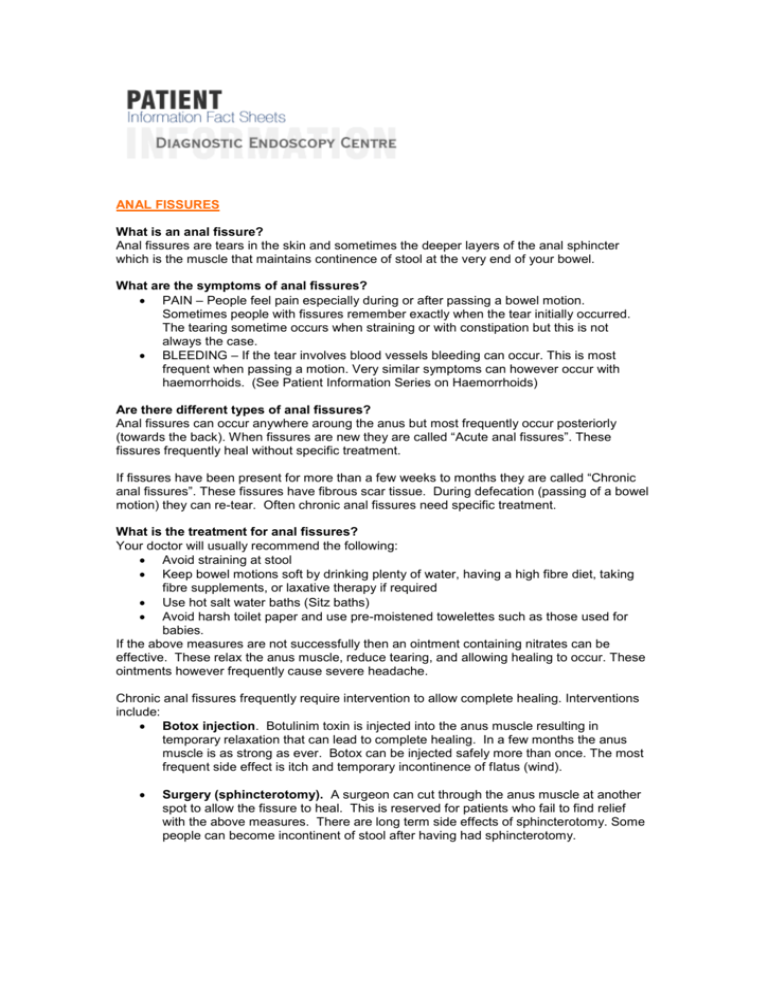
ANAL FISSURES What is an anal fissure? Anal fissures are tears in the skin and sometimes the deeper layers of the anal sphincter which is the muscle that maintains continence of stool at the very end of your bowel. What are the symptoms of anal fissures? PAIN – People feel pain especially during or after passing a bowel motion. Sometimes people with fissures remember exactly when the tear initially occurred. The tearing sometime occurs when straining or with constipation but this is not always the case. BLEEDING – If the tear involves blood vessels bleeding can occur. This is most frequent when passing a motion. Very similar symptoms can however occur with haemorrhoids. (See Patient Information Series on Haemorrhoids) Are there different types of anal fissures? Anal fissures can occur anywhere aroung the anus but most frequently occur posteriorly (towards the back). When fissures are new they are called “Acute anal fissures”. These fissures frequently heal without specific treatment. If fissures have been present for more than a few weeks to months they are called “Chronic anal fissures”. These fissures have fibrous scar tissue. During defecation (passing of a bowel motion) they can re-tear. Often chronic anal fissures need specific treatment. What is the treatment for anal fissures? Your doctor will usually recommend the following: Avoid straining at stool Keep bowel motions soft by drinking plenty of water, having a high fibre diet, taking fibre supplements, or laxative therapy if required Use hot salt water baths (Sitz baths) Avoid harsh toilet paper and use pre-moistened towelettes such as those used for babies. If the above measures are not successfully then an ointment containing nitrates can be effective. These relax the anus muscle, reduce tearing, and allowing healing to occur. These ointments however frequently cause severe headache. Chronic anal fissures frequently require intervention to allow complete healing. Interventions include: Botox injection. Botulinim toxin is injected into the anus muscle resulting in temporary relaxation that can lead to complete healing. In a few months the anus muscle is as strong as ever. Botox can be injected safely more than once. The most frequent side effect is itch and temporary incontinence of flatus (wind). Surgery (sphincterotomy). A surgeon can cut through the anus muscle at another spot to allow the fissure to heal. This is reserved for patients who fail to find relief with the above measures. There are long term side effects of sphincterotomy. Some people can become incontinent of stool after having had sphincterotomy.
